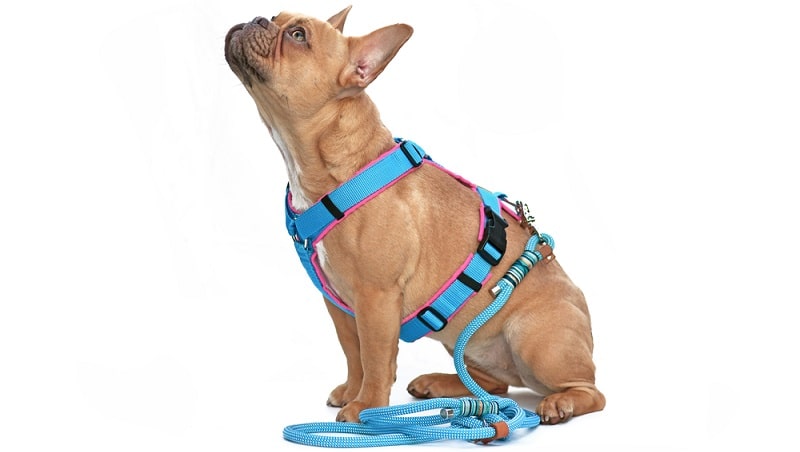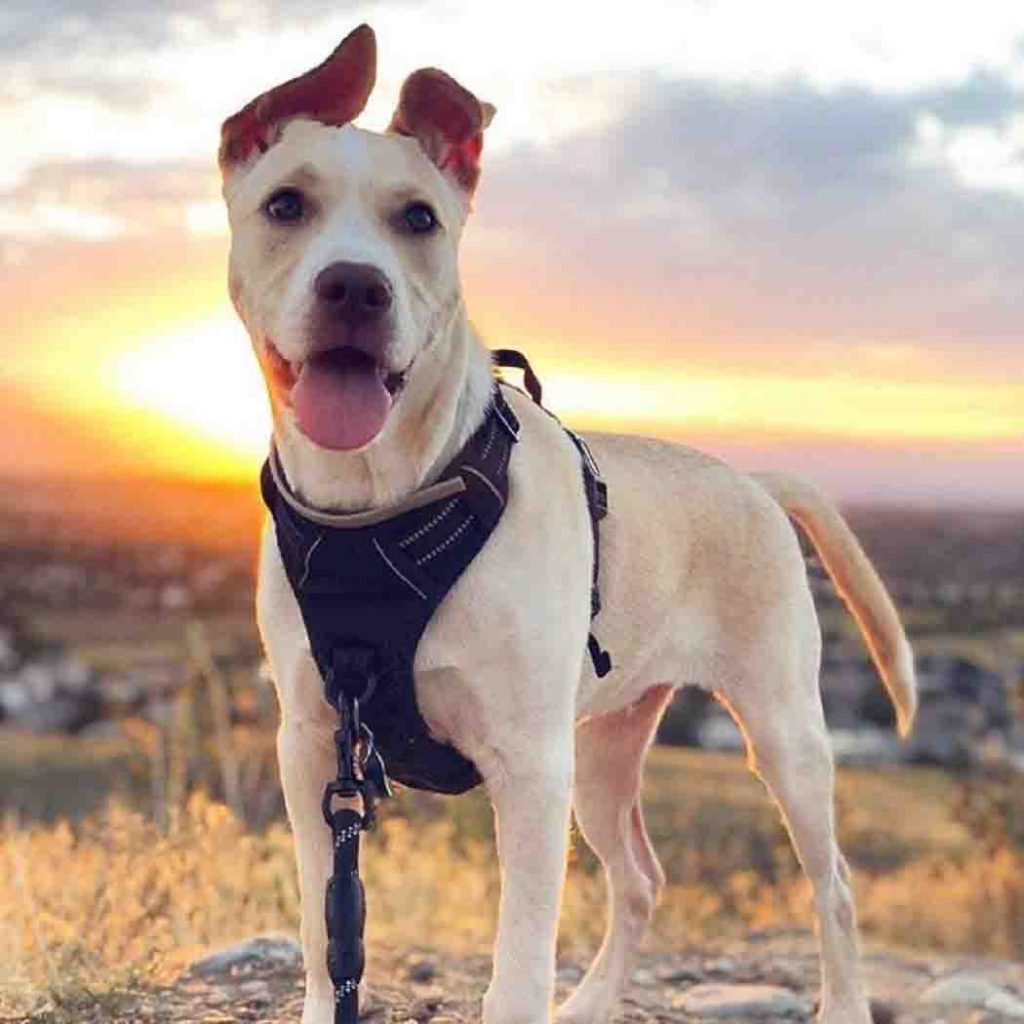Dog
A Guide to No Pull Dog Harnesses: Choosing the Best for your Furry Friend
Dogs are not just pets; they’re part of the family. That’s why dog owners want to make sure that their dog is safe and comfortable at all times, which includes when they go for a walk. A dog harness can be a great option for many people because it provides your dog with more control over his body while also making you feel safer about what he might do next. If you’re in the market for a new dog harness or are wondering how to choose one, this blog post will help!
Why a Dog Harness and Not a Dog Collar?
Most dog owners make the mistake of using a dog collar when they should really be using a dog harness. Dog collars work for some dogs, but it’s important to know that if your dog is prone to pulling on walks or has anxiety while out and about, then you might want to switch from a dog collar to a dog harness instead. A dog’s neck can provide much more tension than their chest area, which means that he will most likely resist his owner less with this kind of restraint in place. A dog collar is a common choice for owners, but there are some downsides to this option. For starters, it’s possible that the dog could get loose and injured or even run away if he pulls hard enough on his leash. It can also be uncomfortable because collars have been known to hurt dogs when pressure is applied at their throat (which happens with any kind of pulling).
If you’re like most dog owners out there who want all of these drawbacks avoided, then a dog harness might just be your best bet!

Benefits of Dog Harnesses:
Dog harnesses provide many benefits over dog collars in terms of comfort and safety while walking. A no pull dog harness will help distribute pressure from the dog’s neck and chest area while also giving him more control over his body. It will keep your dog safer on walks, which greatly benefits owners who worry about getting any injuries to themselves or their dog.
Dog harnesses are usually made of mesh so they’ll be really breathable in the summer months when it gets hot outside (since dogs can become overheated easily). They’re designed to distribute pressure across large areas of the dog’s body instead of just focusing it at one spot like most collars do.
Why is Leash Pulling so Dangerous?
If you have a dog who likes to pull on walks, then it’s important that he is wearing the right type of dog harness.
- Pulling can lead to some very serious injuries for both your dog and yourself over time.
- Lesh puling can cause serious injuries to your dog. The dog’s neck has a lot of nerves that can be harmed from constant pulling on the leash.
- Pulling on a leash can cause added stress for dogs that are already nervous.
- If you have an aggressive walker or runner who is constantly pulling forward it can put an undue strain not only on their necks but also on the muscles surrounding this area causing pain in your dog’s eyes, ears or head.
- Dog harnesses are designed to distribute pressure across more of the dog’s body than just one spot like most collars do. The no-pull dog harness will also keep him in control much better when walking around instead of being able to pull against his owner at any time!
How Does No Pull Dog Harness Work
Now that we’ve established why dog collars are not the best option for dog owners with high-energy walkers or anxious dogs, it’s time to talk about what a No Pull Harness actually is. A dog harness secures around your dog’s chest and torso (usually just under his front legs), and clips in the back. A no-pull harness places the leash clip near the front of your dog on its chest. Front clip harnesses have the ability to discourage your dog from pulling by making them feel uncomfortable. Whenever they try to pull using their back muscles instead, pressure will be put on these clips that quickly discourage them from doing so anymore!
This doesn’t mean that these types of dog restraints don’t come with their own risks, though!
The Drawbacks
- Some models are challenging to put on properly if they’re designed incorrectly.
- Discomfort due to the material used (many dogs do get used to wearing one after a few minutes)
- Some dog breeds and their coat may pose discomfort to the dog with fur getting tangled with the attachments
The Benefits
In spite of these potential drawbacks, however, there are many benefits to dog harnesses as well.
- Dog harnesses can also provide an additional sense of security between pet owners and pets during their walks, which some people find comforting after getting out there with their dog!
- It can help protect your dog from injury (e.g., if he jumps up on someone or something),
- Dog harnesses are designed to distribute pressure across a larger area of the dog’s body, which may lead to less discomfort for your dog after use. Once you’ve found the perfect no-pull dog harness for your dog, they’ll feel much safer during their walks with you!

How to Train Your Dog on a No Pull Dog Harness
Don’t be discouraged if your dog doesn’t understand this new harness right away! You’ll first want to get your dog used to their new harness. There are a few steps you can take to help them get used to it.
- Place the dog’s collar loosely around their neck and attach the leash clip on top of the dog’s chest, then hold onto both pieces of equipment while they’re wearing the no-pull dog harness for about five minutes.
- Next, put both pieces of equipment back in place but hold onto only one at a time and walk around with your dog for another three or four minutes each way so that he gets used to his surroundings (since most dogs feel more comfortable when walking next to someone).
- Finally, slowly release pressure from either piece of equipment as your dog gets more comfortable with the harness.
After you’ve done this for a couple of days, your dog should be used to the no-pull dog harness!

No-Pull Dog Harness Buying Guide
If you’re ready to purchase a dog harness, check out these tips!
Consider what your dog’s needs are
It is a good idea to start with your dog’s activity level, size, and breed. For example, if your dog is a Jack Russel that likes to run around or has hyperactive tendencies, then you’ll want to get a perfect fit no-pull dog harnesses with clips on both sides. Their coat is sleek enough to slip the harness on, and the dog is small enough to still feel comfortable wearing the harness.
If your dog has dog fur that tangles with attachments or if they have a coat like a Husky’s which can get caught in them very easily, then choose no-pull dog harnesses without any straps on top of your dog’s head. These types won’t be an issue for less active dogs and enjoy walking next to their owners more often!
Consider the materials used in the design
Some dogs do not react well to certain materials and they might be more likely to chew them up too quickly. Nylon tends to be the most popular option because of its durability, but dog owners should know that leather alternatives do exist for those who might want a softer material on their dog’s body. Mesh fabric material is a popular choice with dog owners. The cool, breezy mesh fabric tiny holes provide breathability and comfort.
Consider safety
Watch out for features like reflective stitching or double back buckles. These will ensure safety even at night when visibility isn’t as high.
Consider dog size
No-pull dog harnesses come in a variety of sizes, from extra small all the way up to XXL. The best dog harness for your dog is based on their weight! If you have any questions about what size your dog needs, we recommend checking out the sizing chart on the dog harnesses’ packaging for a general idea of what size to order.
Measure your dog! This will help you to avoid buying one too large or small and make sure everything fits correctly when it arrives in the mail (or if you’re purchasing at a pet store).
With the popularity of dog harnesses on the rise, it is not hard to understand why many pet owners are switching from a traditional dog collar to a no-pull dog harness. It may be difficult for some people to believe that with just one change in the equipment they can experience such an improvement in their relationship with their canine companion. No pull dog harness reviews have been overwhelmingly positive and there are countless success stories out there waiting for you if you decide to make the switch! If you need more information about how no pull dog harnesses work or which ones might suit your needs best, don’t hesitate to contact our team today so that we can help guide you through this process. We’re looking forward to hearing about what you think in the comments below.












